Last Updated on August 31, 2021 by Asif Iqbal Shaik
Samsung unveiled its new lineup of QLED TVs at CES 2017, and experts agree that when it does hit the market, these TVs will take the whole viewing experience to a higher, never-seen-before level. Just as LED TVs were a huge improvement on LCD screens, QLED TVs are slated to be better than OLEDs in a way everyone will be able to perceive.
But What is a QLED TV?
Subscribe to Onsitego
Get the latest technology news, reviews, and opinions on tech products right into your inboxA QLED TV is one that combines LED screens with nano quantum technology.
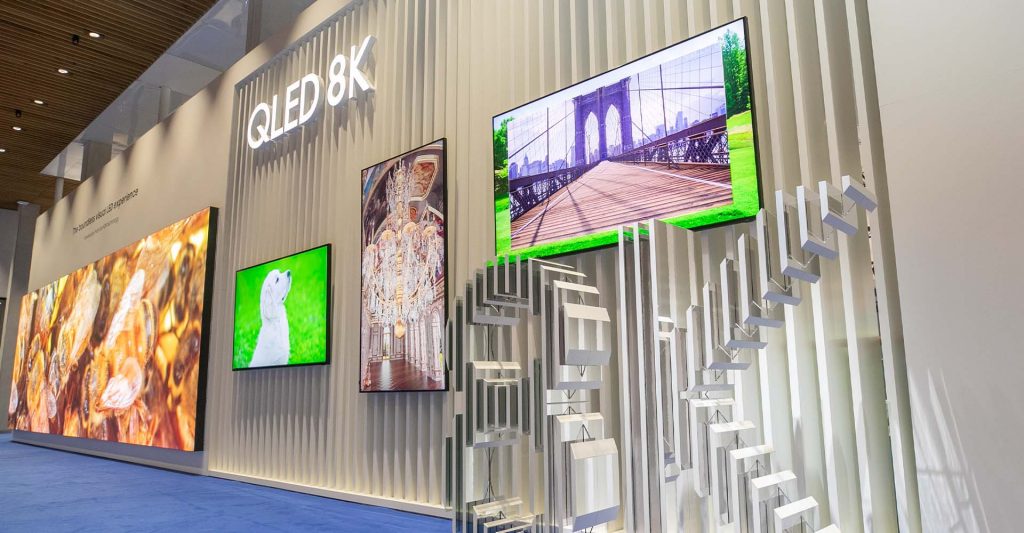
QLED stands for Quantum Dot Light Emitting Diode, and it is the next big step Samsung took after the SUHD (Super Ultra High Definition) TVs in the past. But maybe before we start talking about QLED TVs, it would make more sense to talk about Quantum Dots and what they are.
What Are Quantum Dots?
Quantum Dots are not new. In fact, they have been in use for a while now, both in Samsung’s SUHD TVs and the Amazon Kindle Fire HDX 7, but what really are these things?
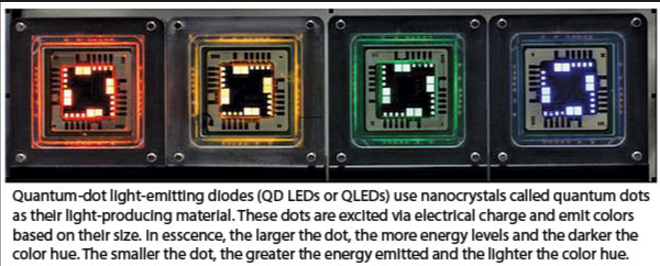
Quantum Dots are particles, really, between two and ten nanometres in diameter, and when set up with other materials, they can semi-conduct to give off different colours depending on their size. So they can essentially give off brighter, more vibrant and a wider range of colours. This is excellent when you are watching HDR content because higher peaks of brightness can then be possible.


Quantum Dots are more economical than OLED to manufacture, so now viewers can get an arguably better picture for a lower price. However, OLEDs tend to produce the most punchy blacks and that is not something Quantum Dots are good at.
QLED TV – Best Of Both Worlds?
In QLED TVs, a film of nanocrystals is placed before LED lights and since each nanocrystal quantum dot makes its own light, the colours produced are brighter and more accurate.
Quantum Dots then can give excellent brightness while OLED gives the deepest blacks. It is when the two meet that QLED is formed to give you the best of both worlds.
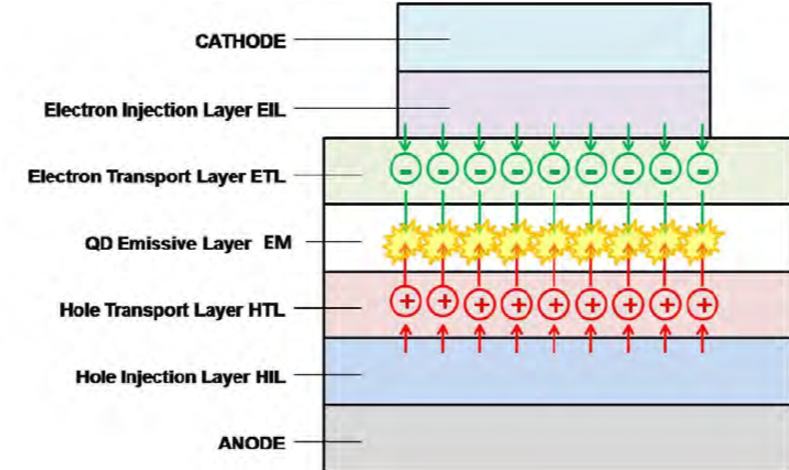
QLED replaces the photoluminescent quantum dots of existing Quantum Dot TVs with electroluminescent quantum dots, so light can be supplied directly at the display. This negates the use of an LED backlight so colours are no longer distorted. When no colours are distorted, black is also pure, giving a good contrast ratio when you watch it.
In simpler terms, a QLED TV does not require a separate backlight for illumination. It natively controls the light in individual pixels so blacks are not distorted and they are deep so you get an excellent contrast ratio. This light transference is the same that happens with OLED TVs.
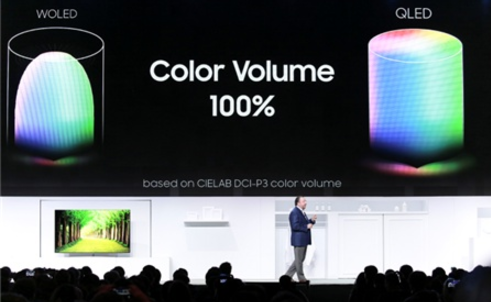
So QLED essentially combines the best of both worlds – it uses the brightness and colour gamut of quantum dots and the light transference of OLED for deeper blacks and clarity and gives you a viewing experience that has 30-40% luminance efficiency advantage and lower power consumption.
This does not mean that QLED is simply OLED with quantum dots. It is an entirely new technology that combines the best of both existing technologies.

Advantages Of QLED Technology
Several advantages of QLED become evident when you understand the technology:
- Pure Colour – QLEDs will deliver 30-40% luminance efficiency advantage over OLEDs at the same colour point.
- At the same colour purity, QLEDs can be twice as more power efficient.
- Large area QLEDs can be printed on ultra-thin flexible substrates, reducing cost of manufacture, and hence, price.
- QLEDs will help designers make ultra thin, transparent and flexible form factors, unlike existing technology.
- The screen is brighter, the viewing angles are better and the blacks are deeper giving a more true-to-life picture on screen.
What Is Samsung’s QLED TV Then?
Samsung, to be honest, has not revolutionised technology really. It has simply taken Quantum Dots and wrapped them in a metal alloy to increase brightness, colour and viewing angle to never-seen-before levels.

But Samsung has not entirely done away with the LED panel intermediary. It has just redesigned it so lights are fired from different angles, rather than a single course to refine the old Quantum Dot technology. A “proper” QLED technology will take time, but for now, Samsung’s QLED TVs are expected to be the best you can get right now.
LG and Sony announced at CES 2017 that they were going to stick with OLEDs for now. However, given how Samsung impressed critics and viewers alike with their true-to-life displays on QLED, if the manufacturing costs can really be kept low, it is only a matter of time before others follow suit.
How Much Will A QLED TV Cost?
Samsung has not revealed the price of its QLED range, but because manufacturing QLEDs is cheaper than OLEDs, the prices are not expected to be very high. This is because OLEDs are individually lit and therefore more expensive to make but QLEDs still use the older LED lighting technology, thereby keeping manufacturing costs low and this will translate to a lower outlay for the end-user.

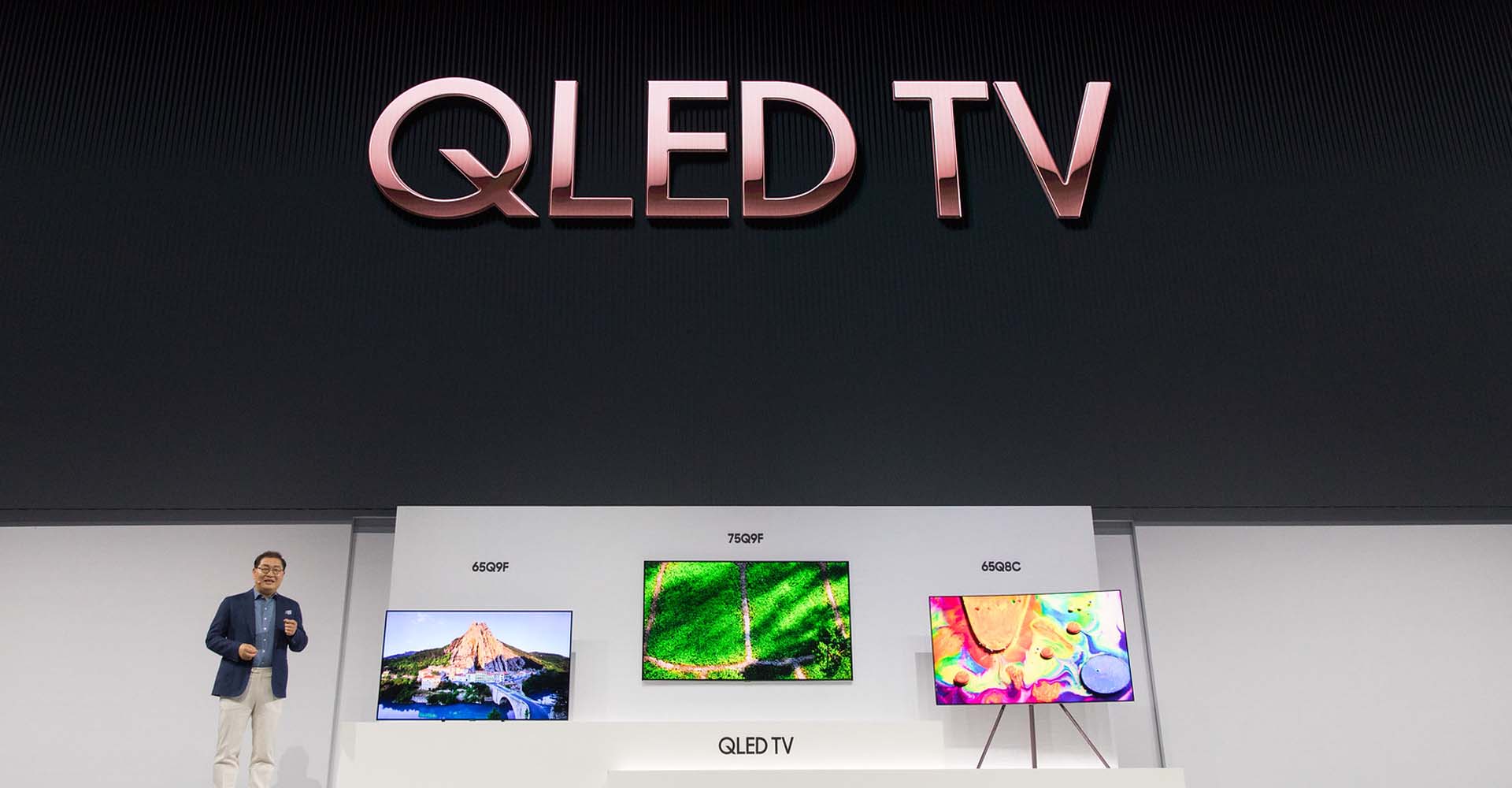
Discussion about this post